Fairmount was formerly a village on the Old Tennessee Road, a route for cattle drives and stagecoaches moving through the eastern side of what are now Gordon County. By act of the General Assembly of Georgia, approved December 14, 1897, Fairmount became a corporate town. In 1927 it became a city extending 1/2 mile in every direction from Dorroh's Store.
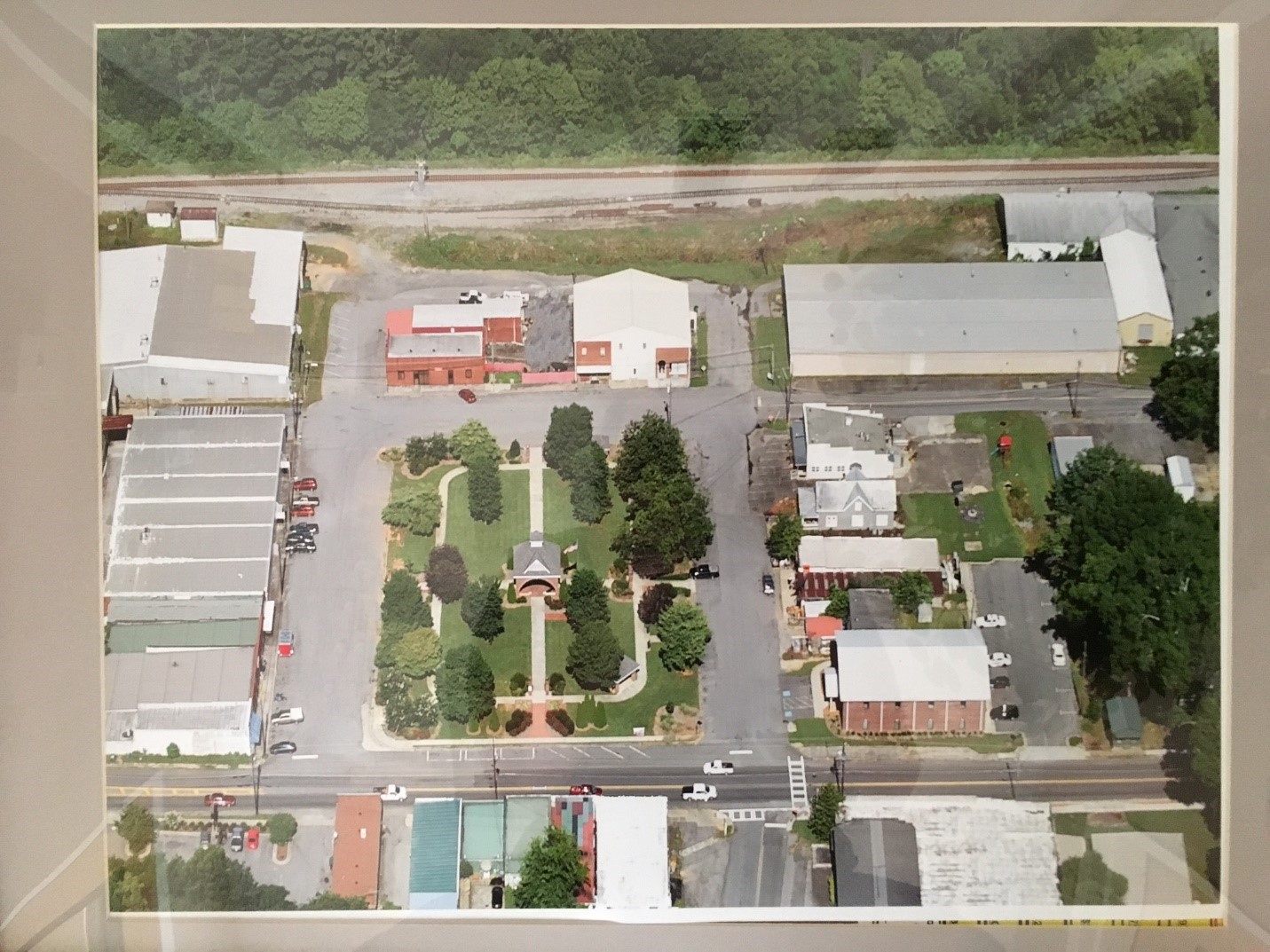 Figure 1 Downtown Fairmount 2017
Figure 1 Downtown Fairmount 2017
Dr. W.B. Vaughn was the first President of the town council. Other members were A. J. Reynolds, J. A. Dorroh, W.H.C. Lloyd, and J.V.R. Taylor.
Prior to the 1832 Land Lottery the settlers were Cherokee Indians and people mostly coming from South Carolina, Tennessee, and middle Georgia. People who came from Virginia about 1849 settled along the Cherokee and Cass County Line becoming known as Little Virginia colony. These Virginians grew tobacco successfully along the Salacoa Creek and erected four factories and packing houses until the revenue and taxes became so high there was no profit and operation ceased.
Settlers from early 1800's were Ephriam White, Thomas Byrd, Willis Erwin, John Stanton, Ephriam Strickland, John Coulter, Judge Carter, L. R. Ramsaur, Phillip Ramsaur, Van Buren Watts, Columbus Watts, Vester Watts, J.G.B. Erwin Sr, H. C. Erwin, Leander Finley, Capt. W.M Dyer, H.G. Finley, James Patton, J.H Fuller, and others. Their first Gordon County tax digest (1851) listed land holders in #874 Militia Dist. (Fairmount).
The fields surrounding Salacoa Creek were very fertile and many families farmed here. Salacoa is Cherokee, “Sala” meaning greasy and “Coa” meaning corn. Schools and churches were important to the early settlers. The Baptist church here being the oldest Baptist church in Gordon County. The original church was built in 1836 and was called Bethel. A larger church was built in 1872 and the current church was built in 1943 on land Donated by Mrs. Mary Hudgins Warlick.
The first Train rolled through town in 1905. Philip Tate donated 30 acres of land to the L&N RR company for right of way and Columbus Watts sold L&N the land for the depot and section houses. Mr. Tate set aside 50 acres to the east of the railroad with a city park in the middle, “TATE PARK”, and started a new Fairmount.
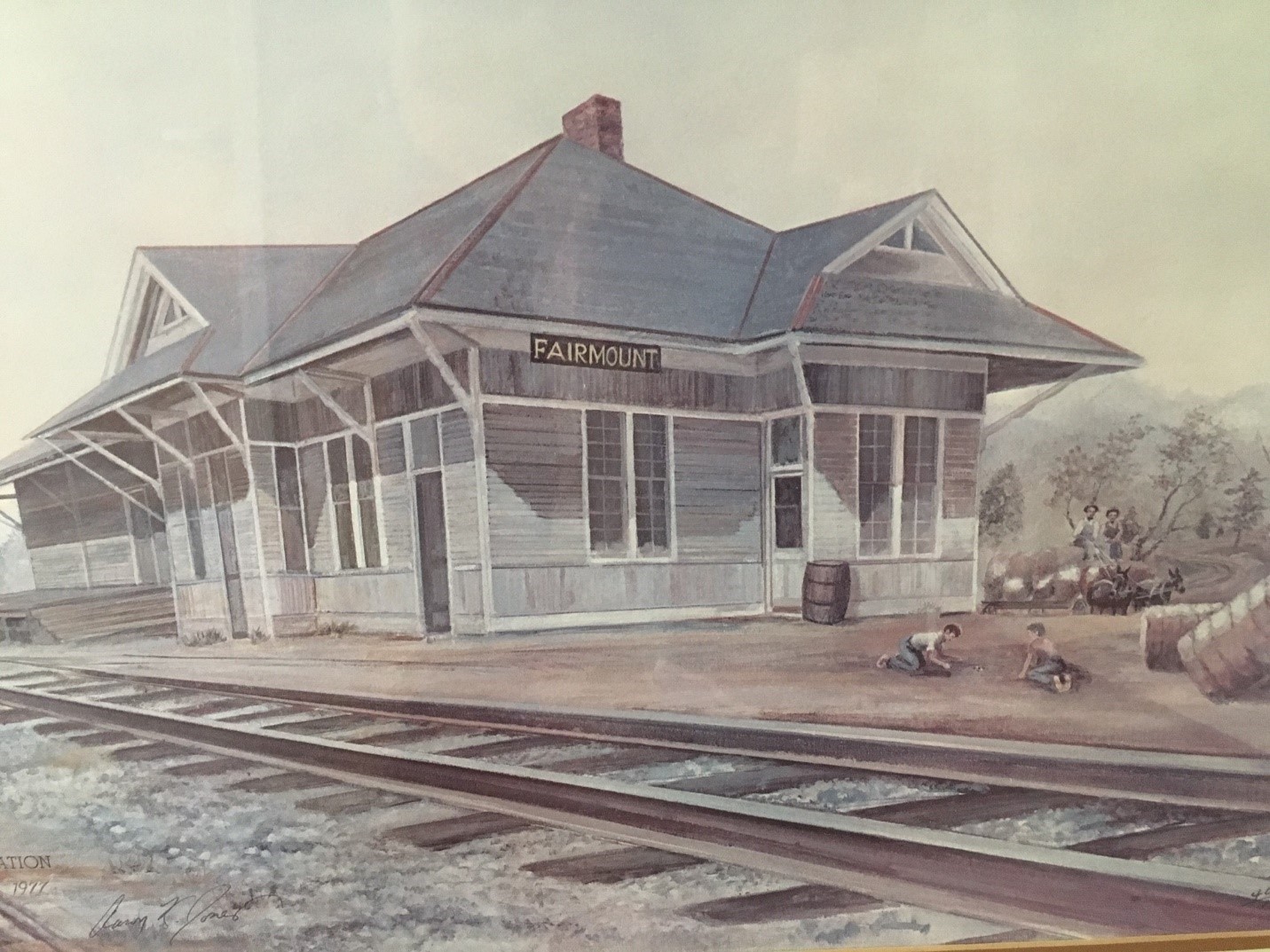 Figure 2 Painting of L&N Railroad Depot
Figure 2 Painting of L&N Railroad Depot
The railroad brought freight and passengers to town along with improved mail service. There were two hotels in town, the Keffee and Dorroh Hotels to give travelers a place to stay.
Phillip Tate married Edna Ferguson on July 2nd, 1901. They moved to Fairmount on April 19, 1907, when Mr. Tate started working at the Bank. He later became President of the Fairmount Bank and when he died his wife Edna Tate was elected to take his place. Making her the first woman bank president in Georgia if not the nation. She held this position for 20 years. Their Son, William Tate, was born on September 1st, 1903 in Calhoun Ga. He attended Fairmount High School and the Georgia Military Academy graduating in 1920. He then attended the University of Georgia receiving his A. B. Degree in 1924 and then his M. A. in 1927. He finished his graduate work at Columbia, Harvard and the University of Chicago. He then became a teacher at the University of Georgia where he would become Dean of Men in 1946. A position he held until 1971 making him possibly the most famous of all people from Fairmount.
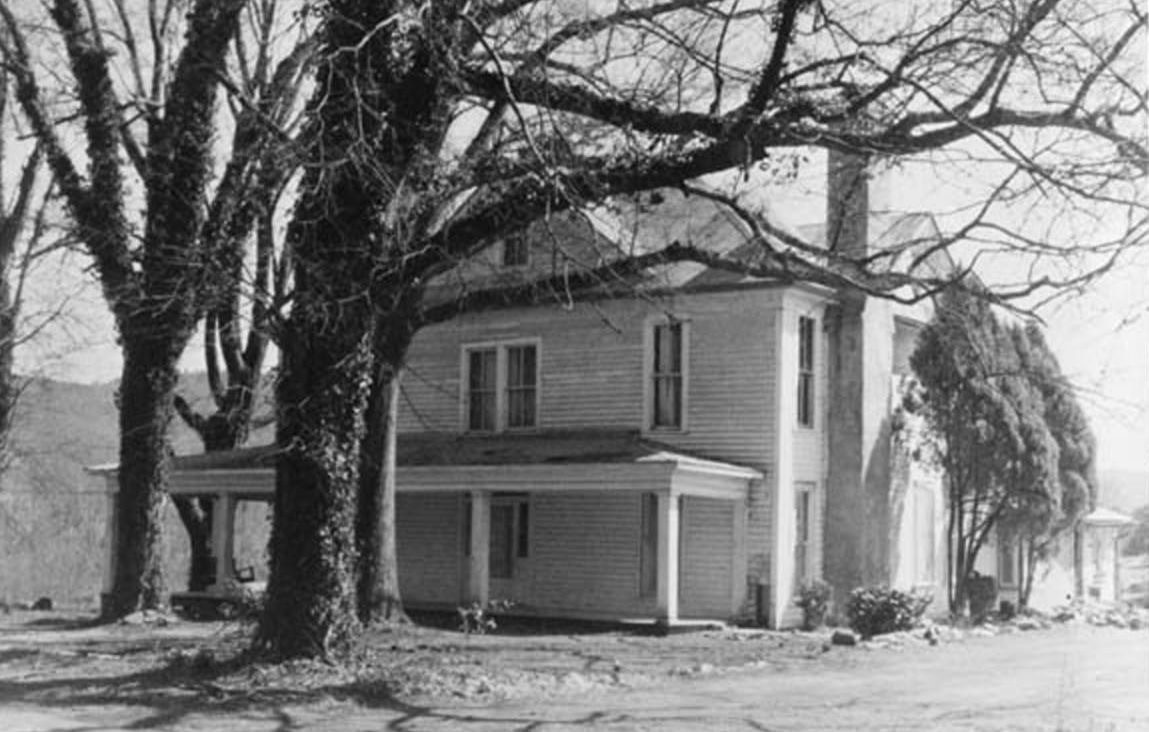 Figure 3 Tate House
Figure 3 Tate House
There was once a college which flourished in the late 1800’s and was accredited by the North Georgia Methodist Conference. This is the school now known as Reinhardt College in nearby Waleska, Ga. The Fairmount site closed in 1920 and became Fairmount High School in 1923.
In 1924 Fairmount and Sonoraville were accredited by the State and were termed “County High Schools” which allowed anyone from Gordon county to attend. This was the first attempt by Gordon county to provide free high school education for all the children of the county. The structure was a three-story wooden building vacated by the college. In 1927 a $25,000 bond issue was floated and a new 10 room building was built.
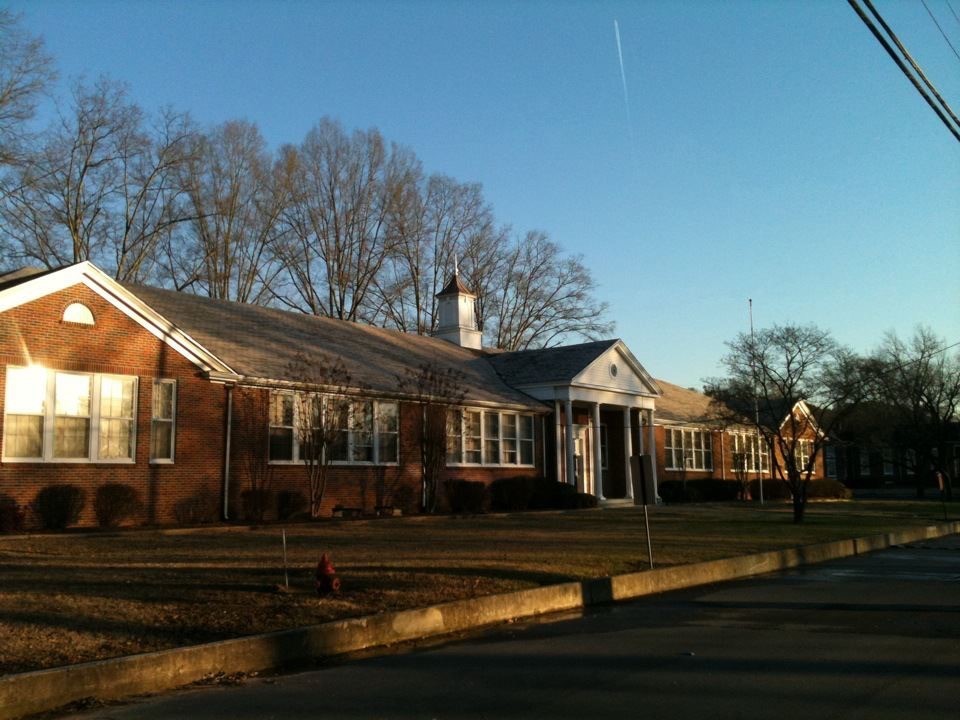 Figure 4 School built in 1927
Figure 4 School built in 1927
E.D. Lacey formed Fairmount Chenille Co. in 1938. This became one of the major employment opportunities in the city well into the 1960’s. this was the first manufacturing plant on the east side of the county.
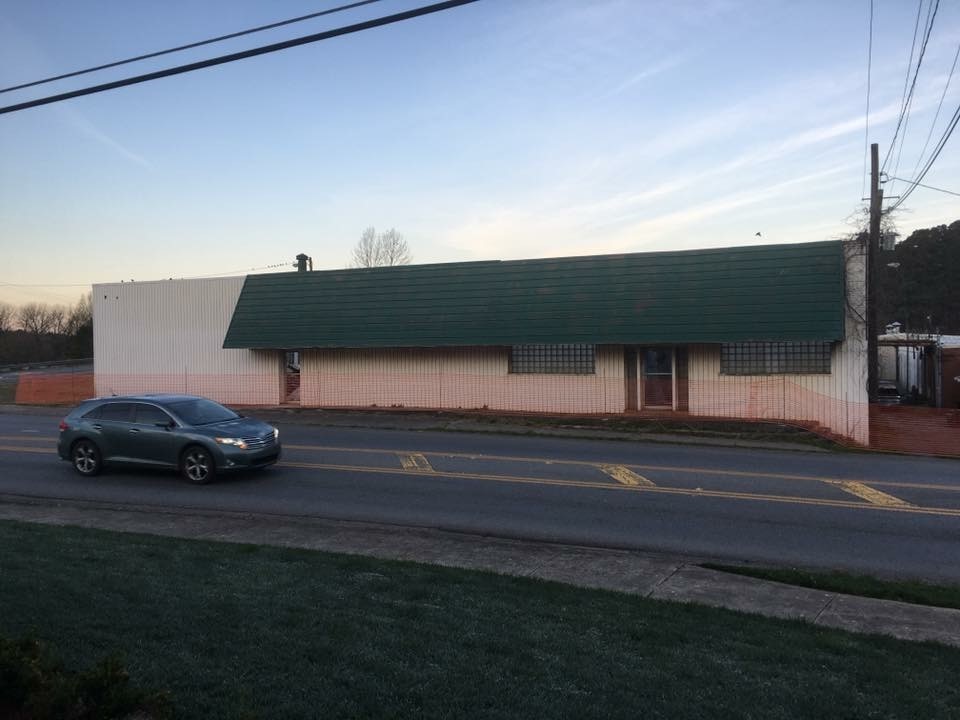 Figure 5 Lacey Chenille plant
Figure 5 Lacey Chenille plant
The Medlin Motor Company was in the building at the corner of Hwy 411 and Hwy 53. They sold Model T Fords and Model A Fords. The great depression unfortunately forced them to close.
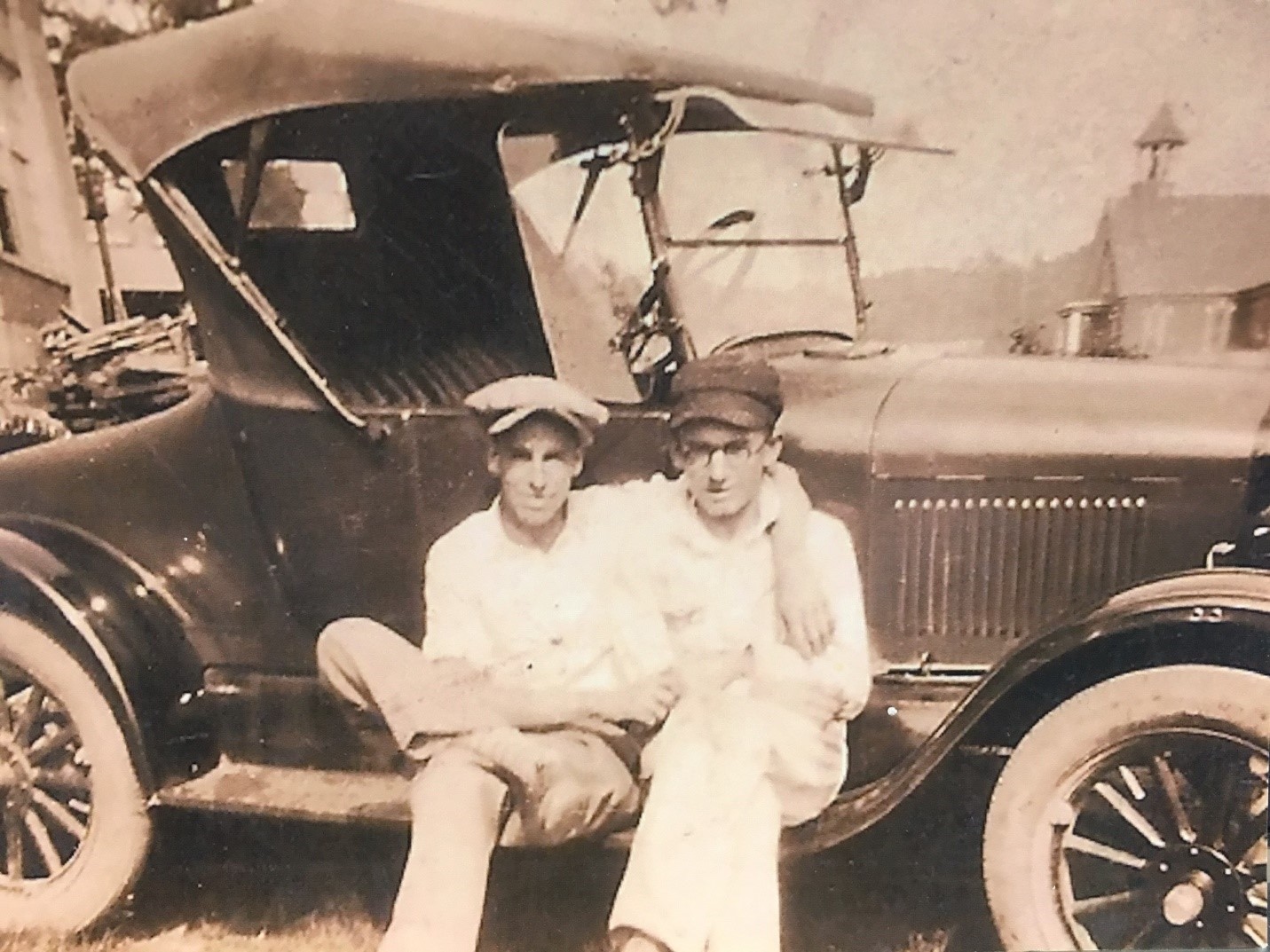 Figure 6 Fairmount 1920's
Figure 6 Fairmount 1920's
Old Methodist church in background. Picture at intersection of Highway 411 and 53 looking east. Possible- Ralph Dorroh (on the right) and Rembert Medlin , who owned the Ford dealership at that time. Picture taken just south of Lacey Chenille building, which was originally Medlin Motors. 1926 Ford Model T.
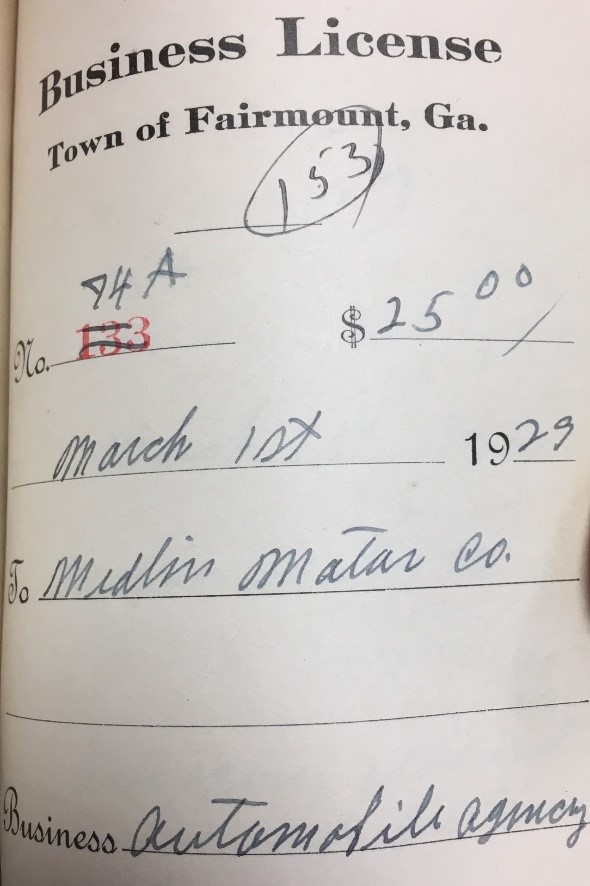
Figure 7 Medlin Motors Business License 1929
The 1940’s saw a new Masonic Lodge built and in 1946 The American Federation of Women’s clubs built a new clinic in which Dr. Byron Steele practiced medicine.
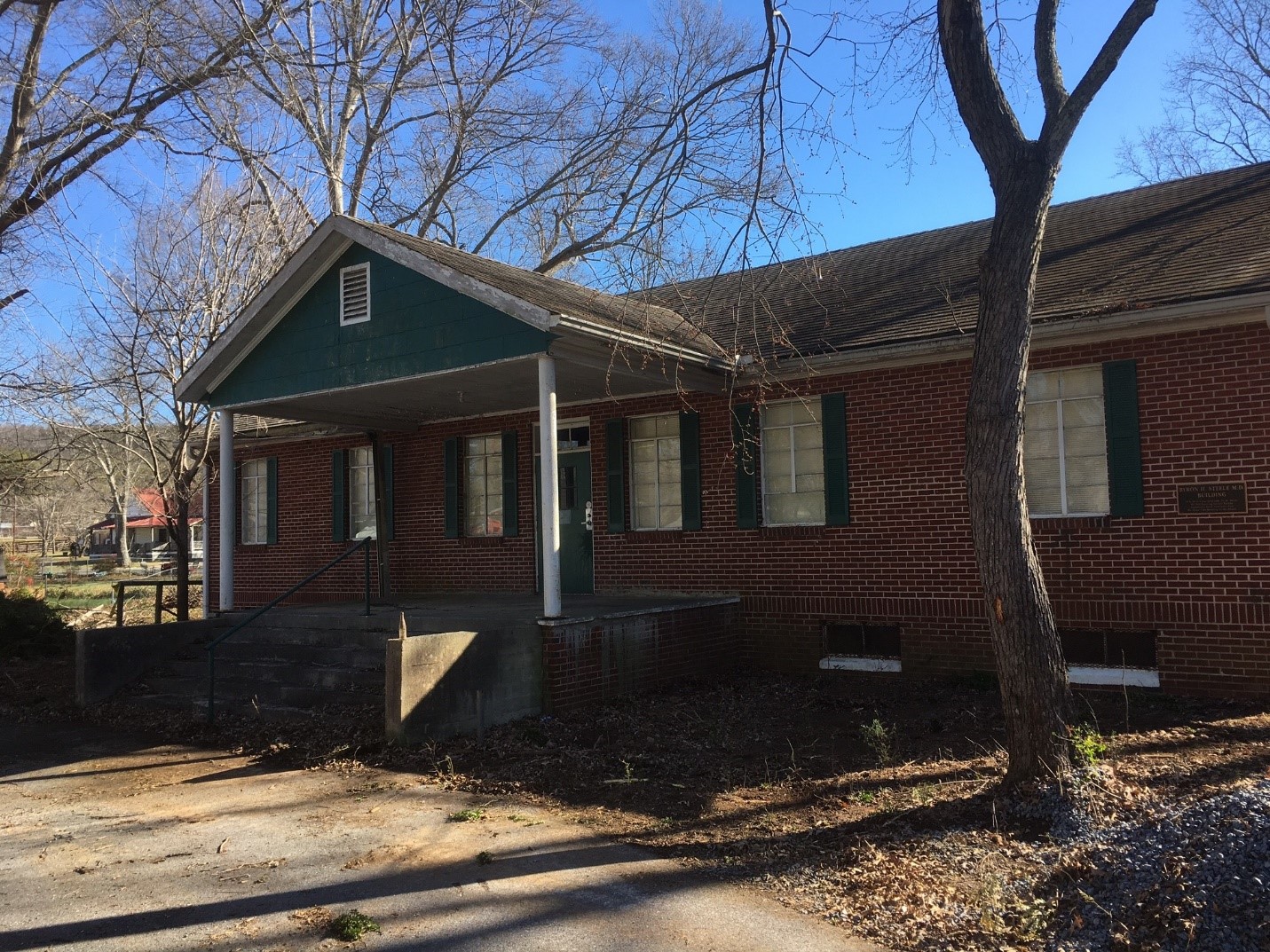 Figure 8 Clinic Building
Figure 8 Clinic Building
Dr. Vernon Ray opened the drug store in its current location still operated to this day by John Davidson.
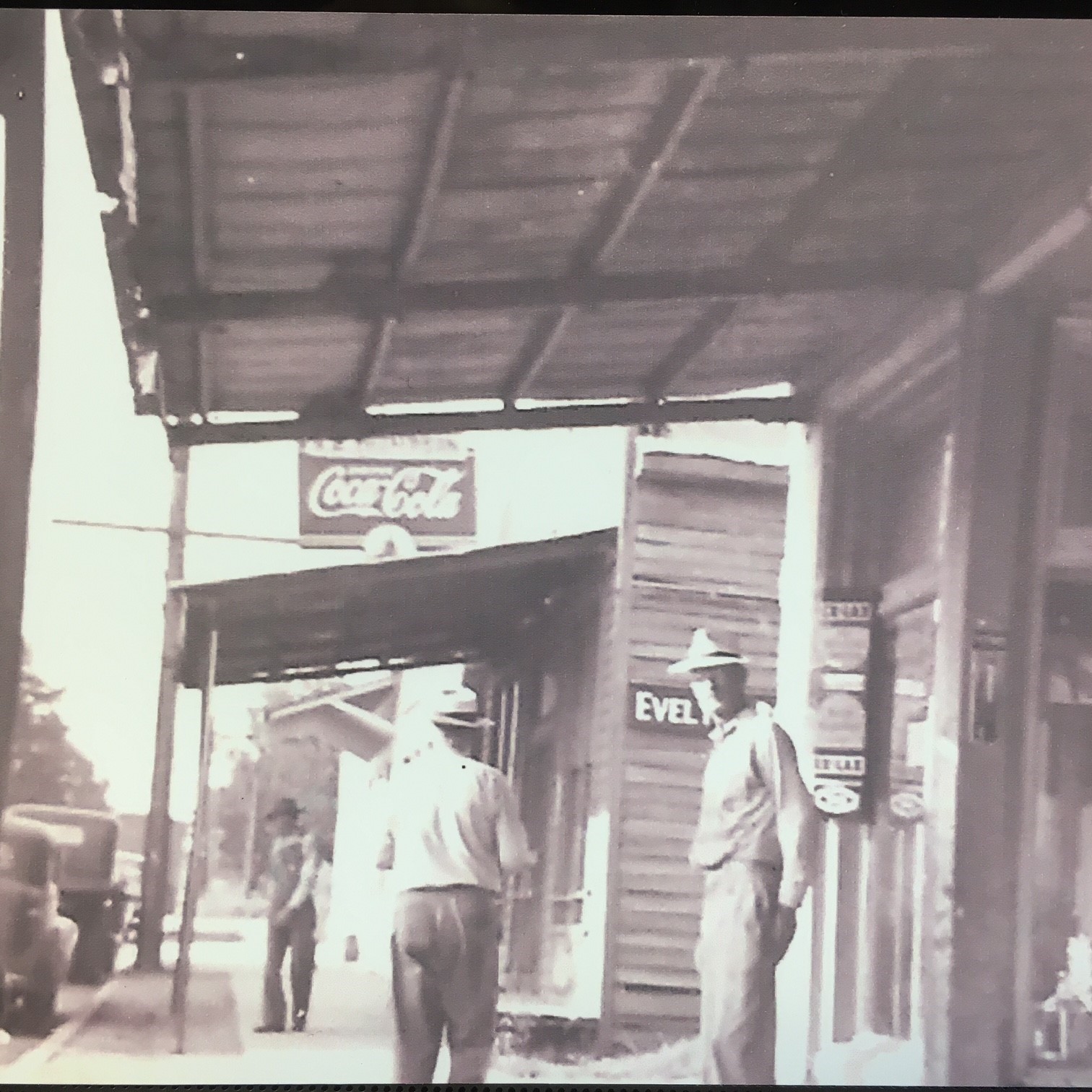 Figure 9 front of drugstore 1940's
Figure 9 front of drugstore 1940's
Fairmount Telephone Company became the first independent dial system in the State of Georgia. E.D. Lacey was the owner operator of the Telephone company. The phone company is still operated out of the original building by Frontier Communications.